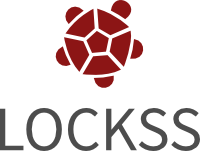Active Noise Attenuation Using Lqg/ltr Control
DOI:
https://doi.org/10.18618/REP.2004.2.023027Keywords:
Active noise control, LQG/LTR control, stability robustnessAbstract
This paper presents a control system design for active noise cancellation using “Linear Quadratic Gaussian / Loop Transfer Recovery” (LQG/LTR). An implementation by an equipment like a headset is proposed, where both active and passive attenuation techniques are used. In this paper, the active technique is applied to attenuate low-frequency acoustic noise. The design objective is not only the active attenuation of acoustic noise, but also the sound audition at frequency band of the human voice. Results obtained from digital simulations are presented, which is considering the existence of a noise in the environment located near the turbine in a hydroelectric plant. In this noisy environment, the noise is attenuated and the equipment allows the user to hear human voices.
Downloads
References
H. Sano, T. Inoue, A. Takahashi, K. Terai, and Y.Nakamura, "Active Control System for Low-Frequency Road Noise Combined With an AudioSystem", IEEE Trans. on Speech and AudioProcessing, vol. 9, no. 7, October 2001. https://doi.org/10.1109/89.952494 DOI: https://doi.org/10.1109/89.952494
S.M. Kuo and D.R. Morgan, "Active Noise Control: ATutorial Review", Proc. of the IEEE, vol. 87, no. 6, p.941-972, June 1999. https://doi.org/10.1109/5.763310 DOI: https://doi.org/10.1109/5.763310
S.J. Elliott, "Practical control systems for combatting audible noise show up in aerospace, general aviation,and military roles", IEEE Spectrum, p. 54-61, Jun 1999. https://doi.org/10.1109/6.769270 DOI: https://doi.org/10.1109/6.769270
Chang, C.-Y.; Shyu, K.-K. "Active noise cancellation with a fuzzy adaptive filtered-X algorithm". Circuits,Devices and Systems, IEE Proceedings, vol. 150, p.416-422, Oct. 2003. https://doi.org/10.1049/ip-cds:20030406 DOI: https://doi.org/10.1049/ip-cds:20030406
Jiun-Hung Lin; Kuang-Jung Wu; Ping-Ting Liu; Chu,W.; Shuenn-Tsong Young. "A design for active noise cancellation in the 2 cc coupler".Acoustics, Speech, and Signal Processing, 2002.Proceedings, vol. 4, p. 13-17, May 2002. https://doi.org/10.1109/ICASSP.2002.1004775 DOI: https://doi.org/10.1109/ICASSP.2002.1004775
Cheng-Yuan Chang; Kuo-Kai Shyu. "A self-tuning fuzzy filtered-U algorithm for the application of active noise cancellation". IEEE Transactions on Circuits andSystems I: Fundamental Theory and Applications, vol.49, p. 1235-1333, Sept. 2002. https://doi.org/10.1109/TCSI.2002.802350 DOI: https://doi.org/10.1109/TCSI.2002.802350
Belur, M.N.; Banavar, R.N.; Mahindrakar, A.D."Active noise cancellation using H/sub /spl infin//control techniques". Proceedings of IndustrialTechnology, p. 192-195, Jan. 2000.
Yue Wang; Chun Zhang; Zhihua Wang . "A new variable step size LMS algorithm with application to active noise control". Proceedings Acoustics, Speech,and Signal, p. 573-5, April 2003.
Chaoui, J.; de Gregorio, S.; Gallissian, G.; Masse, Y."DSP-based solution for ambient noise reduction in mobile phones". Proceedings Acoustics, Speech, and Signal Processing, p. 2391-2394, March 1999. https://doi.org/10.1109/ICASSP.1999.758420 DOI: https://doi.org/10.1109/ICASSP.1999.758420
2003 IEEE Workshop on Applications of SignalProcessing to Audio and Acoustics Applications ofSignal Processing to Audio and Acoustics, 2003 IEEEWorkshop on. , p. 19-22, Oct. 2003.
J.C. Doyle and G. Stein, "Multivariable FeedbackDesign: Concepts for a Classical/Modern Synthesis",IEEE Trans. on Automatic Control, vol. AC-26, no. 1,February 1981. https://doi.org/10.1109/TAC.1981.1102555 DOI: https://doi.org/10.1109/TAC.1981.1102555
Cruz J.J. "Controle Robusto Multivariável", Ed. USP,São Paulo, 1996.
A. G. Falcone, Eletromecânica, Ed. Edgard Blücher Ltda., São Paulo , Brasil. 1985 (vol.2)
Downloads
Published
How to Cite
Issue
Section
License
Copyright (c) 2004 Eletrônica de Potência

This work is licensed under a Creative Commons Attribution 4.0 International License.















